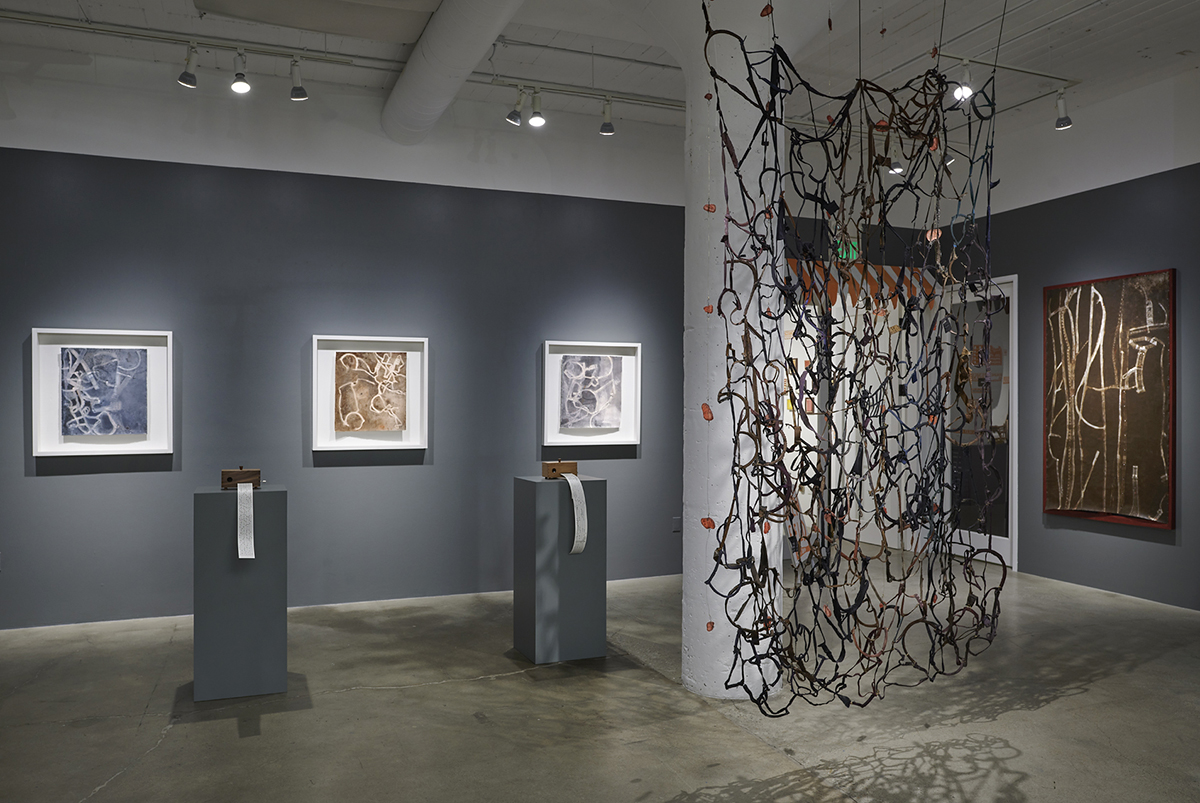
Black Mountain Masters Still Inspire
 |
Even the most avant-garde art, seen as shocking in its time, or vulgar, can seem sweetly sentimental in later years as it grows mossy with nostalgia. That’s why it’s good to shake things up by turning some of today’s cutting-edge artists loose to play with mid-20th century concepts from someplace like, say, Black Mountain College.
‘Open Field: Nine Artists Respond to the Ideals of Black Mountain College’ is a three-room show of mostly 'multidisciplinary' art, most of whose participants were asked by gallerist Catharine Clark to create work inspired by the philosophy and practice it behind Black Mountain College, a very small school with very big ambitions. The school's mission was to develop free-thinking and independent adults through an education based to a large degree on art.
 |
Clark is an admirer of the rural North Carolina college, and of the artists who flourished there during its existence from 1933 to 1957, including Josef and Anni Albers, John Cage, Ruth Asawa, and Buckminster Fuller.
“The work of Anni Albers, in particular, invited a radical reevaluation of the boundaries between fine art and craft,” the gallery writes, “and her experiments with non-traditional and often industrial ‘art materials’ evoked the rarefied and the mundane all at once."
Anni Albers, who for much of her life remained in the shadow of her husband, was, along with him, one of the two earliest officially designated Bauhaus 'masters' to make their way to the New World just as the Bauhaus in Germany closed under Nazi pressure. Anni worked in textiles in both a fine arts and craft-industrial framework, later designing for such furnishing firms as Knoll.
 |
When in 1933 the architect Philip Johnson told them he had lined up for them the Black Mountain gig, the Albers thought North Carolina was in the Philippines.
In addition to new work by Jen Bervin, Lenka Clayton, LigoranoReese, Mary Muszynski, Reniel Del Rosario, Stephanie Syjuco, Leilah Talukder, and Amy Trachtenberg (note the prevalence of women, largely of color), the exhibit includes a few artworks by Black Mountain alumni, including Anni and Ruth Asawa.
With much of the work on display by younger artists, you need to dig a bit to discover the connection with their modernist ancestors. Not so, though, with an entertaining video-installation by Stephane Syjuco, whose work dates not from 2020 or 2021, but from 2013.
A model of Le Corbusier’s classic modern home, the Villa Savoye, sits in front of the audience as we fly through a digital recreation of this iconic 1931 modernist house on a screen that juts beyond.
 Lenka Clayton, Houseplants Tended by Anni Albers (03/10/2021) in the series 'Typewriter Drawings,' 2021. Typewriter ink on paper, rendered with a portable 1957 Smith-Corona Skywriter typewriter, 14 1/4 x 11 1/4 inches framed. Courtesy of the artist and Catharine Clark Gallery, San Francisco |
In the film, though, rather than showing the villa in its purist International Style white, the villa is tattooed with black patterns, angled stripes, pictographs. We are told that these derive from “folk patterns culled from France's prior colonial era: Moroccan, Algerian and Vietnamese textiles.”
Syjuco’s explorations into racism and colonialism can get heavy handed, but this 22-minute piece is hypnotic. (Note: Corbusier was not affiliated with Black Mountain. The video installation is a side exhibit.)
Leilah Talukder turns a good portion of one room into a display of fashion, with attractive handmade art garments suspended from bits of driftwood, and jewelry of shells and found bits of chain. Talukder makes her pieces from locally foraged and reclaimed objects, just as Albers did in the hills of North Carolina, the gallery points out.
 |
The artistic pair known as LigoranoReese show music boxes with the graphic scores based on Albers’ designs. And a series of drawings created on a 1957 typewriter by artist Lenka Clayton is drawn from her explorations into the Albers’ archive, and references Anni’s use of the typewriter to create art.
The back room of the gallery, presented to us as the exhibit’s store, is a suprise and delight. Both the Bauhaus and Black Mountain were always about commercial production as much as fine art.
So why shouldn’t artist Reniel Del Rosario turn out handmade clay 'I Heart SF' mugs, 'Cute Lil Mug Sculptures' àla Peter Voulkos, or package in plastic hanging bags a 'Relic of the Past,' a ceramic BART from before the days of the Clipper boarding pass? And all at affordable prices?
Catharine Clark is presenting musical events in conjunction with the exhibit, which runs, generously, to September 11. The gallery is one of three clustered on Utah Street near 16th Street, at the foot of Potrero Hill. All are worth visiting. Street parking is easy and a BART station not far away.
- ‹ previous
- 73 of 677
- next ›



